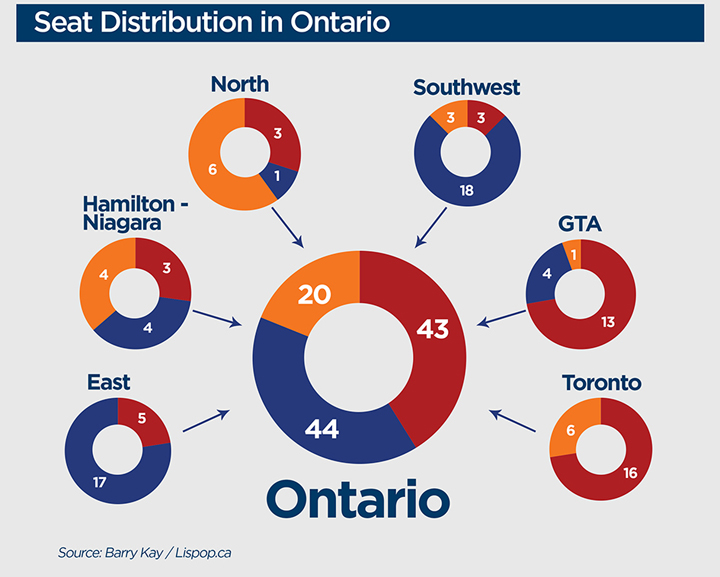As we enter the third week of the Ontario election campaign, one of the most noteworthy surprises produced by the public opinion industry in aggregate is how inconsistent the polls have been over the past two weeks.

It isn’t just that the seven polls referenced have ranged from an 11 per cent Conservative lead to a seven per cent Liberal lead, and even wider if one examines figures screened for likelihood to vote, but the pattern has actually been bi-modal.
The two polls from Ipsos-Reid and one from Oracle have averaged a Conservative lead of close to nine points, while those from Ekos and two from Innovative Research have a Liberal lead of over 6 points. Ironically the pollster in the middle is Forum Research, which uses the controversial robocall (interactive voice response) approach to interviewing.
The pollsters might not all be wrong, but they certainly can’t all be right.
A possible explanation for these substantially diverging results could be attributable to the range of methodologies that are employed. As the traditional assumptions of probability sampling are being replaced by variants of online sampling frames, necessitated by a declining response to phone interviews from the public, such inconsistencies in polling patterns might be becoming more of an issue in the future.
The seat projection below is based upon an aggregate sample of approximately 6,000 respondents collected between May 2 and May 15, in which the Conservative lead in popular vote was just under one per cent. The 2011 results are in parentheses.
Barry Kay is a professor at Wilfrid Laurier University.









Comments